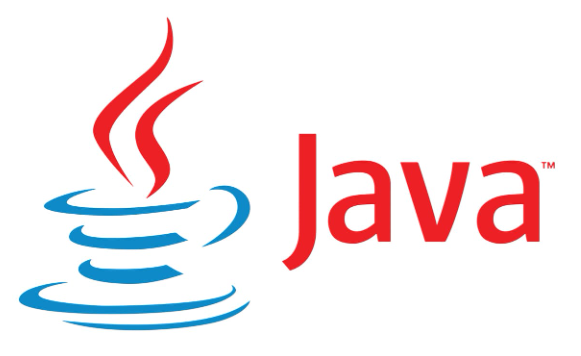Java中的設計模式實戰:單例、工廠、策略模式的最佳實踐
在Java開發中,設計模式是構建高效、可維護、可擴展應用程序的關鍵。本文將深入探討三種常見且實用的設計模式:單例模式、工廠模式和策略模式,并通過詳細代碼實例,展示它們的最佳實踐。
單例模式:確保全局唯一性
單例模式是最簡單的創建型模式之一,它確保一個類只有一個實例,并提供一個全局訪問點。單例模式有多種實現方式,但每種方式都有其適用場景和注意事項。
懶漢式單例
懶漢式單例在類被加載時不會立即實例化,而是在第一次調用getInstance()方法時才創建實例,這樣可以延遲初始化,節省資源。
public class Singleton {private static Singleton instance;private Singleton() {}public static synchronized Singleton getInstance() {if (instance == null) {instance = new Singleton();}return instance;}
}
優點: 實現簡單,按需初始化。
缺點: 每次調用getInstance()都需要進行同步,可能導致性能問題。
餓漢式單例
餓漢式單例在類加載時就立即實例化,確保了線程安全,但無法延遲初始化。
public class Singleton {private static final Singleton instance = new Singleton();private Singleton() {}public static Singleton getInstance() {return instance;}
}
優點: 簡單且線程安全。
缺點: 無法延遲初始化,可能導致資源浪費。
雙重檢查鎖定(DCL)單例
DCL單例結合了懶漢式和餓漢式的優點,既實現了延遲初始化,又保證了線程安全。
public class Singleton {private static volatile Singleton instance;private Singleton() {}public static Singleton getInstance() {if (instance == null) {synchronized (Singleton.class) {if (instance == null) {instance = new Singleton();}}}return instance;}
}
優點: 實現了延遲初始化,且線程安全。
缺點: 代碼相對復雜,需要理解volatile的語義。
最佳實踐: 在大多數場景下,推薦使用DCL單例,因為它兼顧了性能和線程安全。
工廠模式:創建對象的抽象
工廠模式是一種創建型模式,它提供一個創建對象的接口,但讓子類決定實例化哪個類。工廠模式分為簡單工廠模式、工廠方法模式和抽象工廠模式。
簡單工廠模式
簡單工廠模式定義一個創建對象的類,由這個類來封裝實例化的過程。
public class SocialMediaFactory {public static SocialMedia getService(String type) {if ("facebook".equals(type)) {return new FacebookService();} else if ("twitter".equals(type)) {return new TwitterService();} else {throw new IllegalArgumentException("Unknown type: " + type);}}
}interface SocialMedia {void connect();
}class FacebookService implements SocialMedia {public void connect() {System.out.println("Connecting to Facebook");}
}class TwitterService implements SocialMedia {public void connect() {System.out.println("Connecting to Twitter");}
}
優點: 將對象的創建邏輯集中在一個類中,便于維護。
缺點: 違反開閉原則,添加新類型需要修改工廠類。
工廠方法模式
工廠方法模式定義一個創建對象的接口,但讓子類決定實例化哪個類。
abstract class SocialMediaFactory {abstract SocialMedia createService();
}class FacebookFactory extends SocialMediaFactory {@OverrideSocialMedia createService() {return new FacebookService();}
}class TwitterFactory extends SocialMediaFactory {@OverrideSocialMedia createService() {return new TwitterService();}
}
優點: 符合開閉原則,添加新類型只需添加新工廠類。
缺點: 需要為每個產品類型創建一個工廠類。
抽象工廠模式
抽象工廠模式提供一個創建一系列相關或依賴對象的接口,而不需要指定它們具體的類。
interface PaymentFactory {Payment createPayment();
}class CreditCardFactory implements PaymentFactory {@Overridepublic Payment createPayment() {return new CreditCardPayment();}
}class PayPalFactory implements PaymentFactory {@Overridepublic Payment createPayment() {return new PayPalPayment();}
}abstract class Payment {abstract void processPayment(double amount);
}class CreditCardPayment extends Payment {@Overridevoid processPayment(double amount) {System.out.println("Processing credit card payment of $" + amount);}
}class PayPalPayment extends Payment {@Overridevoid processPayment(double amount) {System.out.println("Processing PayPal payment of $" + amount);}
}
優點: 可以創建一系列相關對象,而無需指定具體類。
缺點: 系統中類的數量會顯著增加。
最佳實踐: 根據需求選擇合適的工廠模式。如果對象創建邏輯簡單,使用簡單工廠;如果需要擴展性,使用工廠方法;如果需要創建一系列相關對象,使用抽象工廠。
策略模式:算法的靈活切換
策略模式是一種行為型模式,它定義一系列算法,把它們一個個封裝起來,并使它們可以相互替換。策略模式讓算法的變化獨立于使用算法的客戶。
定義支付策略接口
public interface PaymentStrategy {void pay(double amount);
}
實現具體支付策略
public class CreditCardPayment implements PaymentStrategy {private String cardNumber;public CreditCardPayment(String cardNumber) {this.cardNumber = cardNumber;}@Overridepublic void pay(double amount) {System.out.println(amount + " paid with credit card " + cardNumber);}
}public class PayPalPayment implements PaymentStrategy {private String email;public PayPalPayment(String email) {this.email = email;}@Overridepublic void pay(double amount) {System.out.println(amount + " paid using PayPal " + email);}
}
使用策略上下文
public class ShoppingCart {private List<Item> items;private PaymentStrategy paymentStrategy;public ShoppingCart() {items = new ArrayList<>();}public void addItem(Item item) {items.add(item);}public void setPaymentStrategy(PaymentStrategy paymentStrategy) {this.paymentStrategy = paymentStrategy;}public void checkout() {double total = calculateTotal();paymentStrategy.pay(total);items.clear();System.out.println("Order processed successfully!");}private double calculateTotal() {double total = 0;for (Item item : items) {total += item.getPrice() * item.getQuantity();}return total;}
}class Item {private String name;private double price;private int quantity;public Item(String name, double price, int quantity) {this.name = name;this.price = price;this.quantity = quantity;}public String getName() {return name;}public double getPrice() {return price;}public int getQuantity() {return quantity;}
}
客戶端代碼
public class Main {public static void main(String[] args) {ShoppingCart cart = new ShoppingCart();cart.addItem(new Item("Book", 20, 1));cart.addItem(new Item("Laptop", 999, 1));// 使用信用卡支付cart.setPaymentStrategy(new CreditCardPayment("1234-5678-9012-3456"));cart.checkout();// 切換到PayPal支付cart.setPaymentStrategy(new PayPalPayment("user@example.com"));cart.addItem(new Item("Mouse", 19.99, 1));cart.checkout();}
}
優點: 策略模式使算法可以獨立于使用它的客戶端而變化,提供了靈活的算法切換能力。
缺點: 需要為每個具體策略實現一個類,可能導致類數量增加。
最佳實踐: 在需要動態切換算法或策略的場景中,優先考慮使用策略模式。例如支付方式選擇、算法優化等場景。
總結
單例模式、工廠模式和策略模式是Java開發中非常實用的設計模式。單例模式確保全局唯一性,工廠模式抽象對象創建過程,策略模式提供算法的靈活切換能力。在實際項目中,合理運用這些設計模式,可以顯著提高代碼的可維護性和可擴展性。
記住,設計模式不是萬能的,它們應該根據具體需求謹慎選擇和使用。過度使用設計模式可能導致系統復雜度增加,反而降低開發效率。理解每種模式的適用場景,并在實際項目中根據需求靈活運用,是成為優秀Java開發者的必經之路。

:張量(Tensor)核心操作詳解)

實戰:動態化、智能化你的Nginx,實現復雜Web邏輯 (2025))


)













